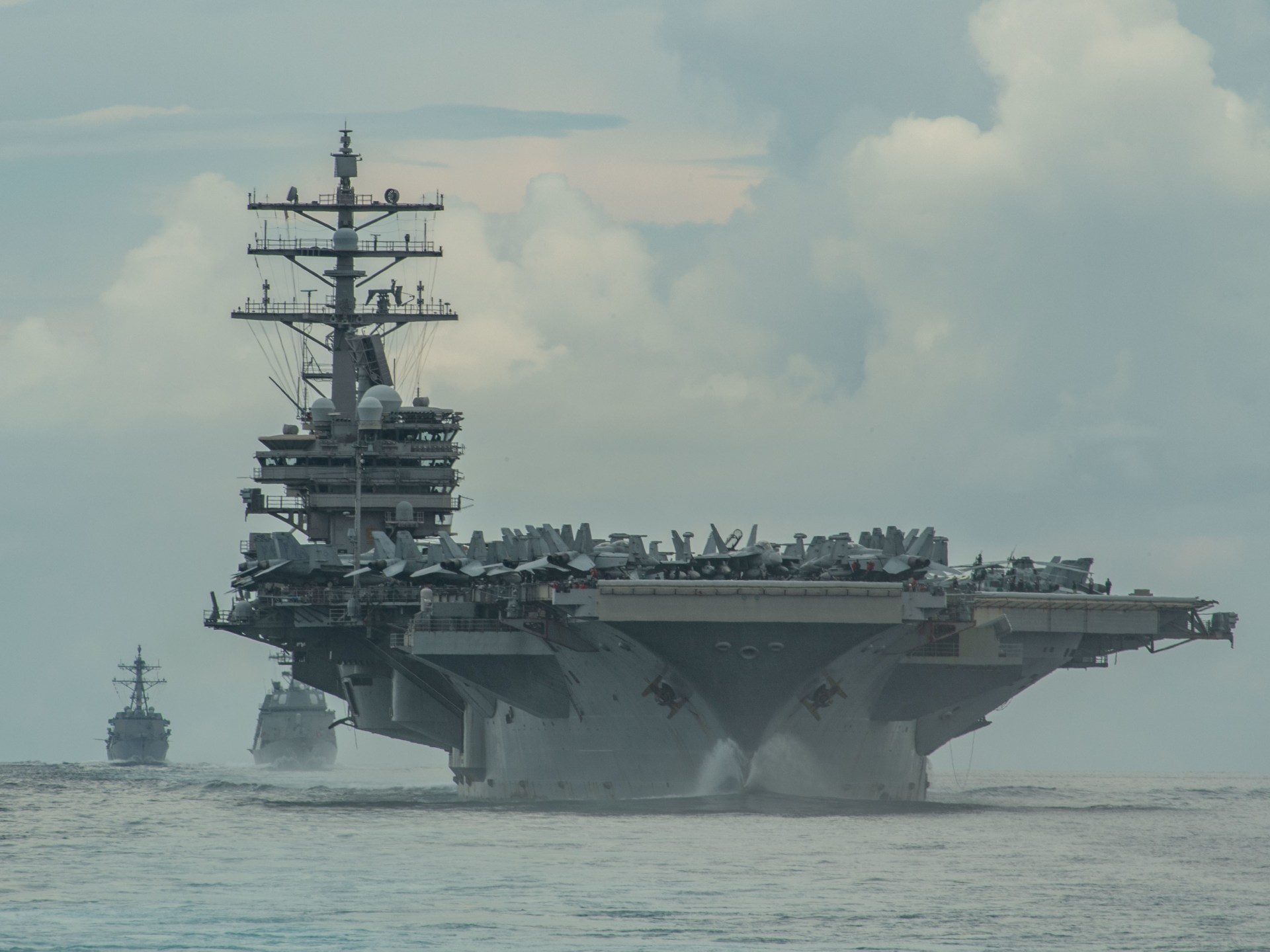US aircraft carrier Ronald Reagan to make port call in Vietnam
Nuclear-powered USS Ronald Reagan is only the third US aircraft carrier to visit Vietnam since the war ended in 1975.
The US nuclear-powered aircraft carrier USS Ronald Reagan is due to stop in Central Vietnam’s port city of Danang in a rare visit by a United States warship to a once wartime enemy.
The aircraft carrier will arrive on Sunday afternoon and stay at Danang until June 30, local media reported a spokesperson for Vietnam’s foreign affairs ministry as saying on Friday.
The visit is only the third by a US aircraft carrier in the 48 years since the withdrawal of American forces and the end of the Vietnam War in 1975.
The scheduled arrival of the Ronald Reagan comes as Washington is seeking to upgrade relations with Vietnam and against a backdrop of increased tension in which Hanoi has had frequent disputes with its larger neighbour over maritime border boundaries in the South China Sea.
On Thursday and Friday, Chinese-language social media was awash with rumours that a Chinese air force H-6K bomber plane flying at low altitude on June 18 had been able to approach the USS Ronald Reagan undetected and lock on to the vessel with its weapons radar before flying off.
No evidence of such an event accompanied the social media reports, though several did reference a report on Monday by China’s State-run Global Times news organisation which reported Chinese H-6K bombers were carrying out “nighttime sorties encircling the island of Taiwan”.
In addition to “encircling the island of Taiwan at night”, the bomber group had also carried out “far sea exercises over the Pacific Ocean” as well as “combat patrols in the South China Sea”, Global Times reported.
According to the US Naval Institute, the Ronald Reagan Carrier Strike Group, which comprises several ships operating in formation, is currently in the South China Sea.
China claims almost the entirety of the South China Sea, including the exclusive economic zones of Vietnam and other countries in the region. US aircraft carriers that frequently cross the energy-rich sea are often shadowed by Chinese vessels.
Last month, the US accused a Chinese fighter jet of performing an “unnecessarily aggressive” manoeuvre against one of its aircraft during a flight over the South China Sea.
The US Indo-Pacific Command — the armed forces branch overseeing the region — said its aircraft was flying in international airspace when it was intercepted by the Chinese J-16 fighter jet.
The Chinese pilot “flew directly in front of the nose of the RC-135, forcing the US aircraft to fly through its wake turbulence”, the US military said in a statement.
All countries in the region should use international airspace in accordance with international law, the statement added.




